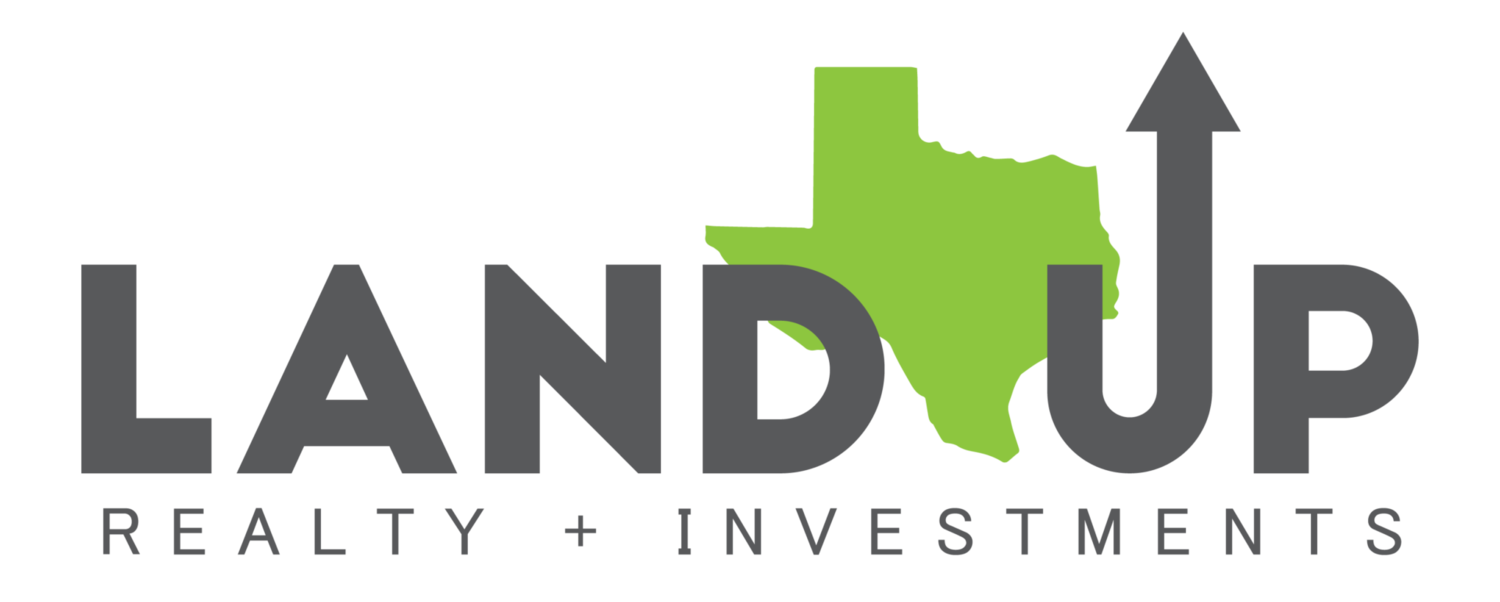1031 Exchanges Explained: Real Estate Strategy for Investors
The Land Up Learning Series
Google defines an investor as, “a person or organization that puts money into financial plans, property, etc. with the expectation of achieving a profit.”
This definition isn’t news - and isn’t even particularly interesting to read! However, investing is anything but boring. It often requires extensive strategy, analytics, risk management, and much more to determine if something is worth the investment. And once the money (and time!) has been put in, the process continues to optimize the deal.
Investing in real estate is a powerful option to generate long-term wealth. Even if real estate isn’t their main industry, many individuals also seek out real estate investments to balance out their portfolios.
1031 exchanges have gained popularity over the years as a profits-maximizing strategy. In our previous blog, we covered a high-level overview of the topic. In this blog, we’ll quickly recap exactly what a 1031 exchange is and dive in deeper.
What is a 1031 Exchange?
Also commonly known as a “like-kind exchange”, a 1031 exchange is a tax-deferred transaction in which an investor can sell a property and use the proceeds to purchase a similar property - all without incurring any immediate capital gains taxes. In a nutshell, someone can “trade” their current property for a similar one. If the sale of the current property makes a profit, it won’t be taxed until later on.
Once the current property is sold, the investor has 45 days to choose a replacement property and 180 days to complete the purchase. One of the reasons this is an effective strategy is that it allows investors to keep more money in their pockets for the time being - capital they can use on other investment opportunities.
Commercial office/warehouse buildings in Luling, Texas at Coastal Lane Business Park
What is Capital Gains Tax?
Let’s say you originally bought land for $100,000. You later decide to sell it for $150,000. In this scenario, you come out ahead with $50,000 in gross profit, referred to as “capital gains.”
When a property is sold for a profit (“realized”), the seller is required to pay taxes on the difference between the original purchase price (the “basis”) and the sale price, if there is a profit (“capital gains”). These taxes are known as a capital gains tax.
Now, the actual percentage of the tax varies. It is calculated based on several factors, including:
Length of ownership
Long-term capital gain - property is held for more than a year
Short-term capital gain - property is held for less than a year
Owner’s tax bracket
Any deductions/credits that apply
For long-term gains, tax rates can range from 0%-20%. Short-term gains correlate to income brackets, anywhere between 10%-37% based on the individual.
How Do Investors Use 1031 Exchanges?
As mentioned, investors are able to keep more money in their pockets by deferring capital gains taxes for the time being. By using these proceeds from the sale of their current property, they can purchase the new like-kind property - to upgrade their investment, adjust their portfolio, or expand their locations.
By swapping the previous property, investors can find a different property that in theory will being in more money over time - setting them up for another 1031 exchange in the future for an even bigger and better investment, or simply keeping the new property with increased revenue. Should they ever sell the new property, the investor would then pay the capital gains tax.
Another common scenario would be diversifying their real estate portfolio. 1031 exchanges aren’t limited to an area - an investor can swap their current property for a similar one in another state, spreading out the locations included in their portfolio.
10.75 acres near Austin, Texas zoned for a new commercial business park
What are the Eligibility Requirements for a 1031 Exchange?
The IRS allows 1031 exchanges to be used for rentals, commercial buildings, and land. However, the properties being swapped must be similar - a commercial building can be swapped for another commercial building, not land.
A real estate expert can help individuals and businesses navigate the 1031 exchange process to ensure eligibility, walk through any considerations, and plan out next-steps.
Here are some key eligibility requirements:
Like-Kind Property: the two properties must be of the same nature, character, or class
Investment or Business Property: the properties being exchanged must be held for investment or business purposes, rather than personal use
Equal or Greater Value: the property being acquired must be of equal or greater value as the property being sold
Same Taxpayer: The investor who sells the property must be the same taxpayer as who acquires the new property
Based on the above requirements, some properties that are not eligible for a 1031 exchange would include residences that are being used for personal use, such as a primary, vacation, or second home. A potential exception would be if these residences are being used by the owner as short, mid, or long-term rentals.
Who Can Help Me with a 1031 Exchange?
If this lengthy blog is an indicator of anything, it’s that 1031 exchanges can be complex! Despite their intricacies, they can be a powerful tool and are typically well worth the effort.
Just like the real estate industry itself, the rules and regulations for 1031 exchanges continue to change. If you’re considering this strategy, alway be sure to consult with an experienced realtor or tax advisor before embarking on your journey.


